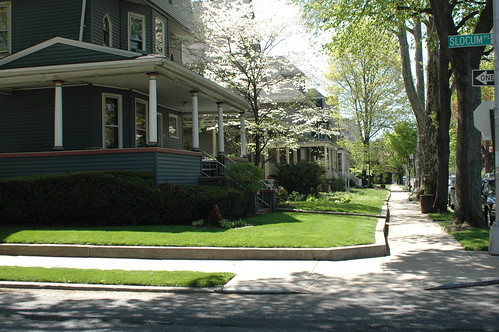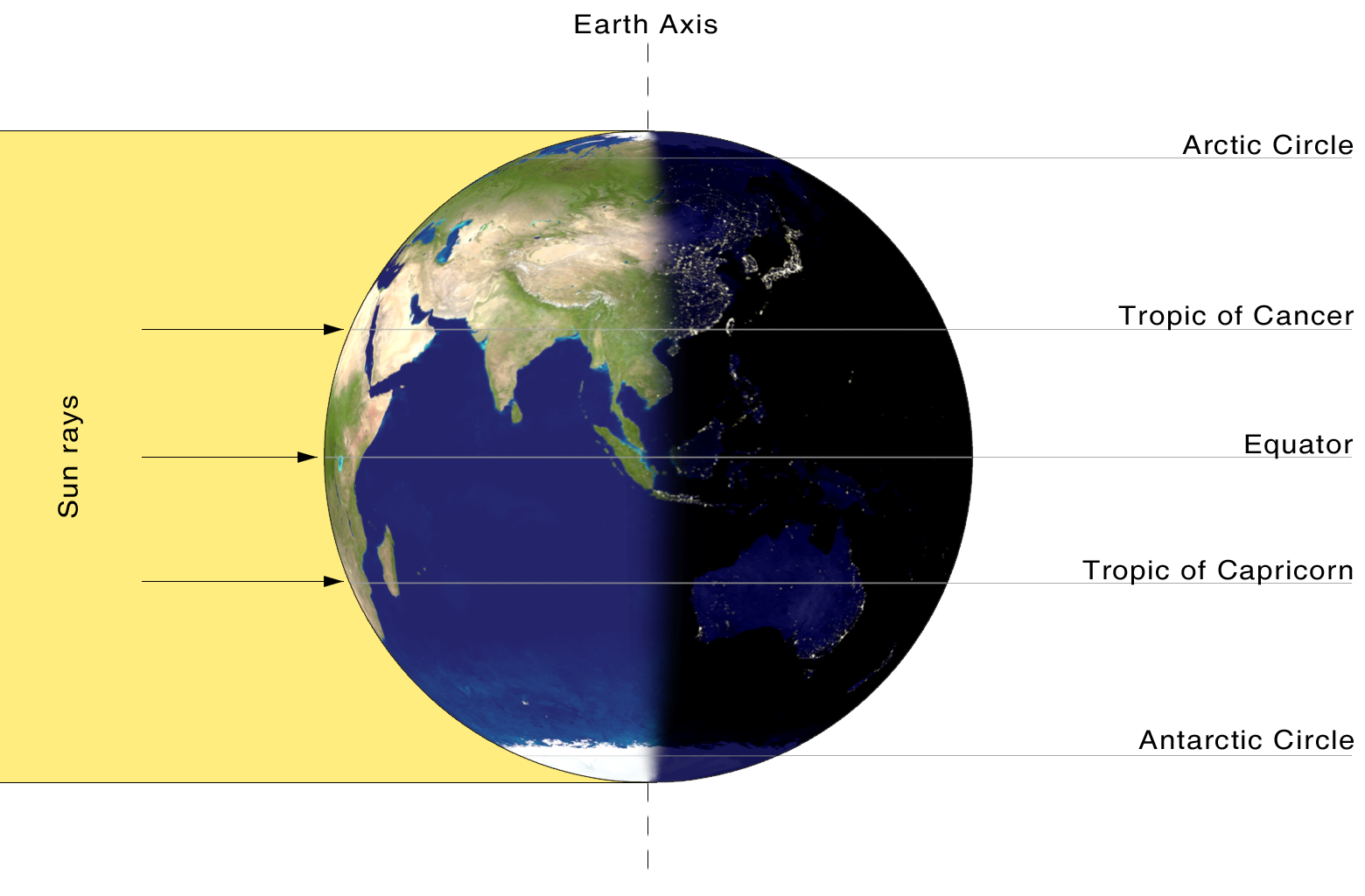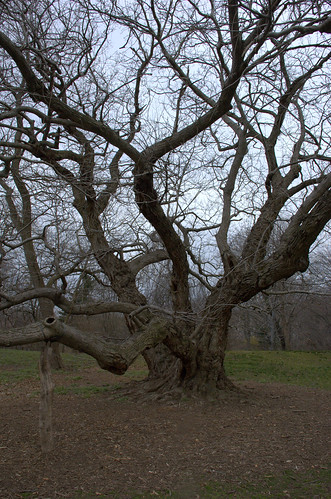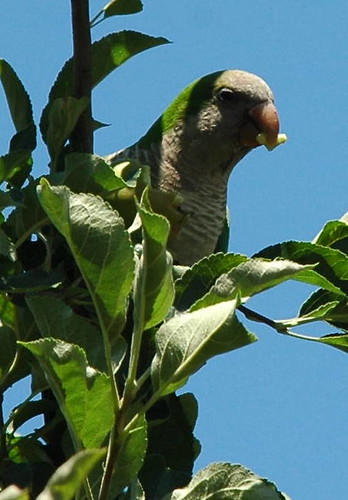2008-04-30: Approved!
2007-11-15: Added link to DCP Zoning Glossary.
Illustration of Front Yard Planting from DCP’s proposed Yards Text Amendment online presentation
At tonight’s CB14 Public Hearing, this is sure to be one of the items on the agenda. On September 17, NYC’s Department of City Planning (DCP) released a proposal to amend zoning regulations to address, for the first time, the extent of paved and planted areas on private property:
The new regulations would prevent excessive paving of front yards by requiring that a minimum percentage of all front yards be landscaped. They would also prohibit steeply pitched driveways in front yards and encouraging rear yard garages to maximize plantings. Excessively tall fences and steps in front yards would also be prohibited. The zoning would clarify definitions of side and rear yards to provide predictability and ensure that all homes have adequate open spaces. Together with the Department’s initiative requiring the greening of commercial parking lots this package of regulations will enhance the attractiveness of neighborhood streets, mitigate storm water run-off and reduce surrounding temperatures while furthering Mayor Bloomberg’s goals for a greener, greater New York.
– Press Release
The Department of City Planning in proposing amendments to the Zoning Resolution relating to yard regulations for residential developments. Although the current regulations prescribe minimum requirements relating to location and size of yards, they generally do not deal with the amount of paving and planting in the yards [emphasis added]. In addition, the current regulations are in some cases unclear and do not deal with fences and steps.
– Yards Text Amendment, DCP
This will potentially provide huge collective benefits to individual homeowners, neighborhoods, and the city:
- Improved streetscape livability, promoting community and economic sustainability
- Reduced storm drainage and combined sewer outflow
- Improved community health, eg: from reduced asthma rates
- Reduced energy costs, especially for summer cooling and air conditioning
This proposal is a first step toward providing some protections. However, it can only work if the underlying zoning is appropriate. Most of the freestanding homes in what’s known as Victorian Flatbush are zoned R3-2, which permits semi-detached row houses, or R6, which is for 6-story townhouses with a continuous street wall. An R2X designation has been used in other down-zoning initiatives, would appropriately reflect the built environment, and provide even more protections if DCP’s proposed changes are approved.
Looking south down Westminster Road in Beverley Square West

Million Trees NYC outlines the economic, tangible, and intangible benefits of NYC’s urban forest:
- Urban trees help offset climate change by capturing atmospheric carbon dioxide in their tissue, reducing energy used by buildings, and reducing carbon dioxide emissions from fossil-fuel based power plants. Our City’s trees store about 1.35 million tons of carbon valued at $24.9 million. In addition, our trees remove over 42,000 tons of carbon each year.
- Urban trees capture rainfall on their leaves and branches and take up water, acting as natural stormwater capture and retention devices. Street trees intercept 890.6 million gallons of stormwater annually, or 1,525 gallons per tree on average. The total value of this benefit to New York City is over $35 million each year.
- Trees remove dust and other pollutants from the air. In fact, one tree can remove 26 pounds of carbon dioxide from the atmosphere annually, the equivalent of 11,000 miles of car emissions. Our trees remove about 2,200 tons of air pollution per year, valued at $10 million annually.
- According to the U.S. Environmental Protection Agency, urban forests reduce urban temperatures significantly by shading buildings and concrete and returning humidity to the air through evaporative cooling.
- By using trees to modify temperatures, the amount of fossil fuels used for cooling and heating by homeowners and businesses is reduced. Our City’s street trees provide $27 million a year in energy savings.
- New York City’s urban forest provides habitat – including food and shelter for many species of birds, insects, and other wildlife, as well as environmental education resources for New Yorkers of all ages.
- Over the years the City has invested millions in its urban forest. Trees provide $5.60 in benefits for every dollar spent on tree planting and care.
- A significant link exists between the value of a property and its proximity to parks, greenbelts, and other green spaces. Smart Money magazine indicated that consumers value a landscaped home up to 11.3 percent higher than its base price. Street trees provide $52 million each year in increased property values.
- The greening of business districts increases community pride and positive perception of an area, drawing customers to the businesses.
- There is growing evidence that trees help reduce air pollutants that can trigger asthma and other respiratory illnesses. Green spaces also encourage physical activity – a healthy habit for any New Yorker.
Looking south down Stratford Road in Beverley Square West


To reach the goal of one million new trees planted in NYC over the next decade, 40% – 400,000 trees – will have to be planted on private property:
The City of New York will plant 60% of trees in parks and other public spaces. The other 40% will come from private organizations, homeowners, and community organizations.
- Street Trees: 220,000
- Parks: 280,000
- Capital Projects and new Zoning Requirements: 100,000
- Private Partners: 400,000
– About Million Trees NYC
We also need to preserve the existing urban forest, much of which is in private hands, and, with no legal protections, at risk. The proposed zoning amendments would provide much-needed protection in the form of restrictions and incentives.
East side of Rugby Rd, looking north from Church Av, in Caton Park

I had sent this article to myself to write about it when it first appeared. Just getting around to it now. It got caught in a “draft”. (I’m sick today, I have an excuse.)
Lawns, manicured bushes and a riot of flowers have helped distinguish the borough’s streetscape, enhancing the livability of its communities and giving almost a county-in-the-city aura to many blocks.
However, in recent years, that trend has shifted. Front yards in many areas have been paved over, and blooms have been replaced by parking pads, as ever-increasing population density combined with an up-tick in the number of cars per family has made a guaranteed parking spot something of a holy grail, with portions of residential neighborhoods morphing into something akin to a concrete jungle.
[The Department of City Planning (DCP)] has proposed an amendment to the city’s zoning resolution that would require that a certain minimum percentage of all front yards be landscaped, based on the length of the property’s street frontage.
– Parking it here has many people angry, Flatbush Life, October 18, 2007
[goo.gl]
Related Posts
Victorian Flatbush at risk from inappropriate zoning, 2007-10-23
Carolina Silverbell: One of a Million, 2007-10-09
State of Flatbush/Midwood, 2007-10-05
How Much is a Street Tree Worth, 2007-04-09
Landscape and Politics in Brooklyn’s City Council District 40, 2007-02-14
NASA Maps NYC’s Heat Island, 2006-08-01
Links
DCP: Yards Text Amendment Home Page, Press Release, Full text (PDF, 26 pages), Online Slide Show (25 pages, PDF version available)
DCP: Green Initiatives (including the Yards Text Amendment)
DCP Zoning Glossary
Million Trees NYC














